|
The
Phonograph Girls
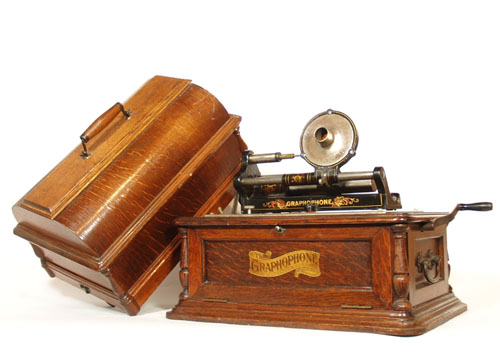
The Phonograph
Girls and Columbia's Twentieth Century Graphophone
By Doug Boilesen, 2021
The Phonograph Girls is a vaudeville
melodrama presented in 1906 by the "Jersey Lilies," a company
which opened in New Orleans in September 1906 and then went "on
the Western circuit." The Talking Machine World wrote
that
"the sketch originated in London,
England, and was reported a success. One of the scenes represents
the interior of a talking machine store, and the Columbia Phonograph
Co.'s Twentieth Century machine is employed to advantage in revealing
the plot."
This scrapbook page of ephemera
starts with the 1906 Talking Machine World's article about
the musical skit "The Phonograph Girls." Newspaper
reviews identify theatres and details about this play as it travelled
its "Western circuit"
of vaudeville. (1) (2)
Ads
for the 1906 Columbia Twentieth Century Graphophone show the machine
that was used in The Phonograph Girls "in
revealing the plot."
Clippings of 1906 interiors of talking
machine stores provide some contemporary context since a store's
interior was one of the scenes represented in this musical skit.
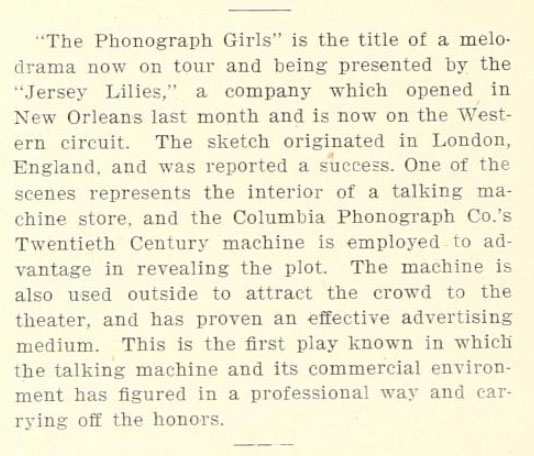
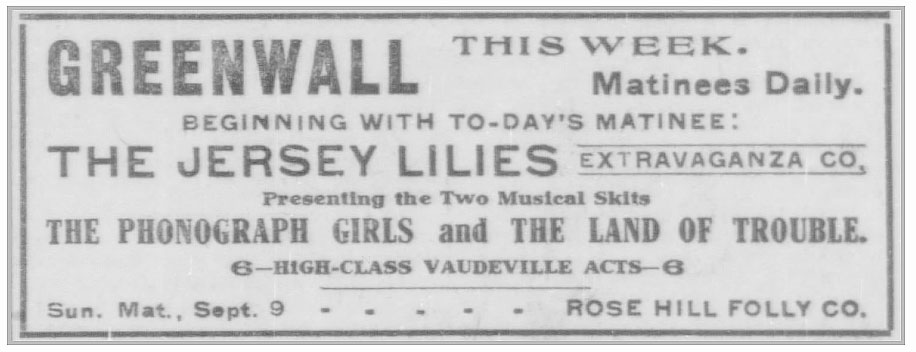
Greenwall Theatre - The
Times-Democrat, New Orleans, LA, September 2, 1906
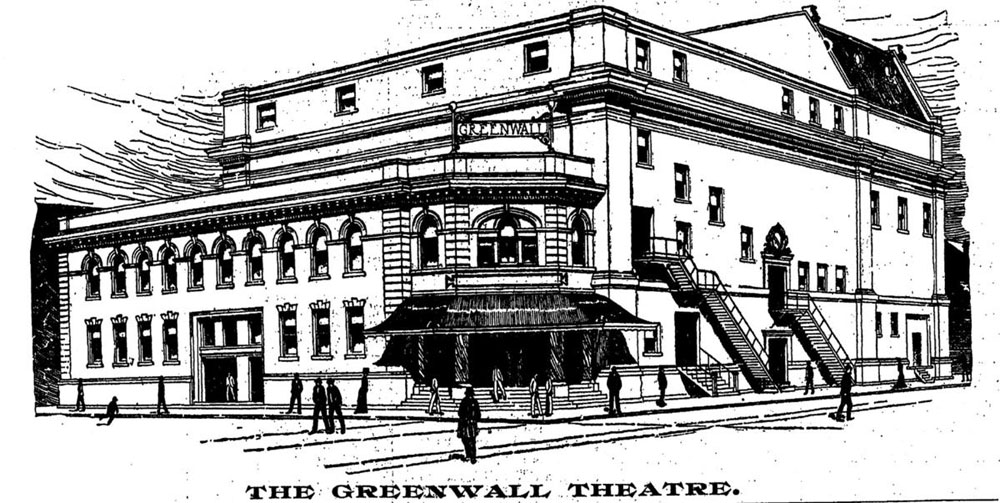
An illustration of New Orleans’ Greenwall
Theatre as it appeared in the Oct. 20, 1904, edition of The Daily
Picayune. Note: Sarah Bernhardt
in March 1906 appeared in this theatre for a seven-night stand.
(3) (Courtesy of THE
TIMES-PICAYUNE ARCHIVES)
The "Jersey Lilies"
- "Rather an odd title for the name of a theatrical company.
Is it not?" commented the following September 9, 1906 review.
One might speculate, however, that the theatrical company named the
"Jersey Lilies" may have triggered some association in the
public's mind with Lillie Langtry, a.k.a.
"The Jersey Lillie" (4) who was on a vaudeville tour in the United
States in 1906.
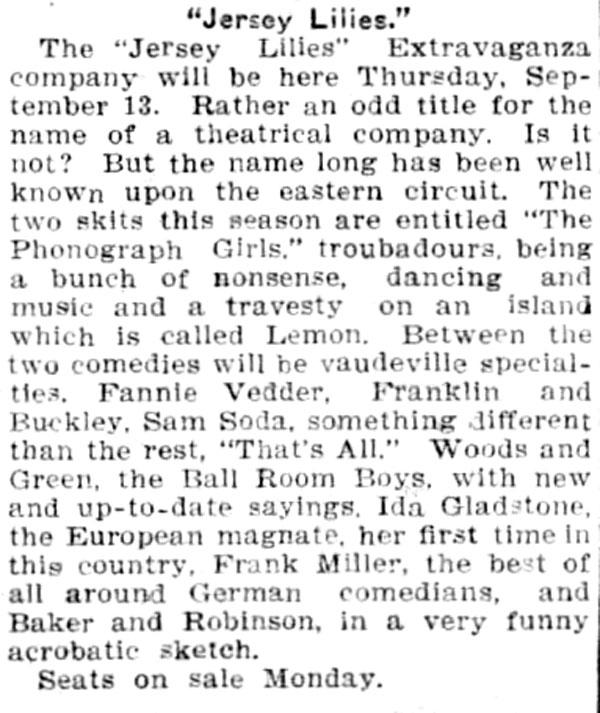
Austin American-Statesman
(Austin, Texas), September 9, 1906
View
Fannie Vedder's Obituary, New York Times, January 22, 1938
View
1907 Ida Gladstone Sheet Music "Wish Me Good Luck On My Journey"
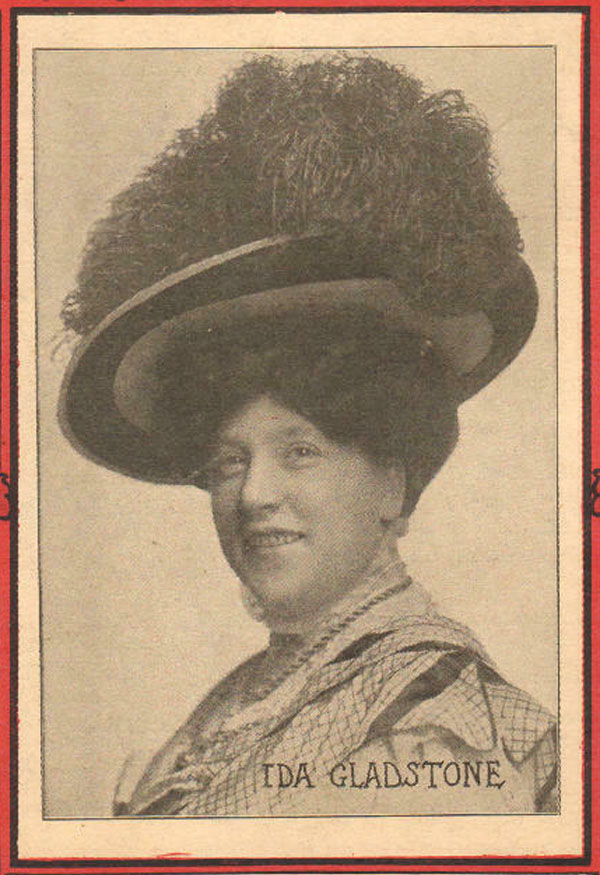
"Ida Gladstone, the
European Magnate, her first time in this country..."
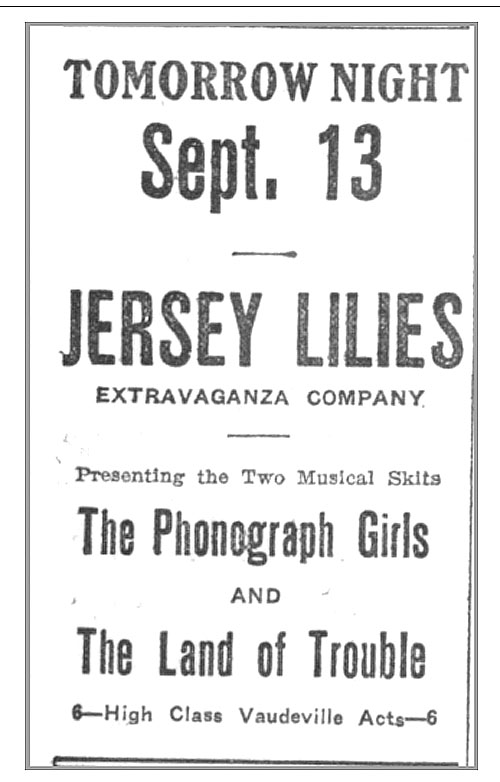
Austin American-Statesman,
September 12, 1906
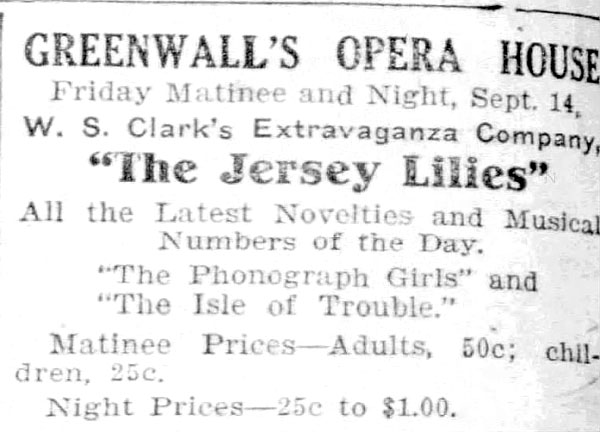
Fort Worth Star-Telegram
(Fort Worth, Texas), September 13, 1906
View
Fort Worth's Greenwall's Opera House circa 1907 (Courtesy Collection:
UTA Libraries - Fort Worth Star-Telegram Collection). William
Clark was still Manager of "The Jersey Lilies" for the 1910-11
season, Julius
Cann's Official Theatrical Guide 1910-1911 "Traveling Companies
and Their Managers"
"A chorus of fourteen girls
dances to music played by a big phonograph on the stage."

The Kansas City Star,
September 17, 1906
"The opening extravaganza, entitled
The Phonograph Girls is a pretentious burletta with a real
plot..."
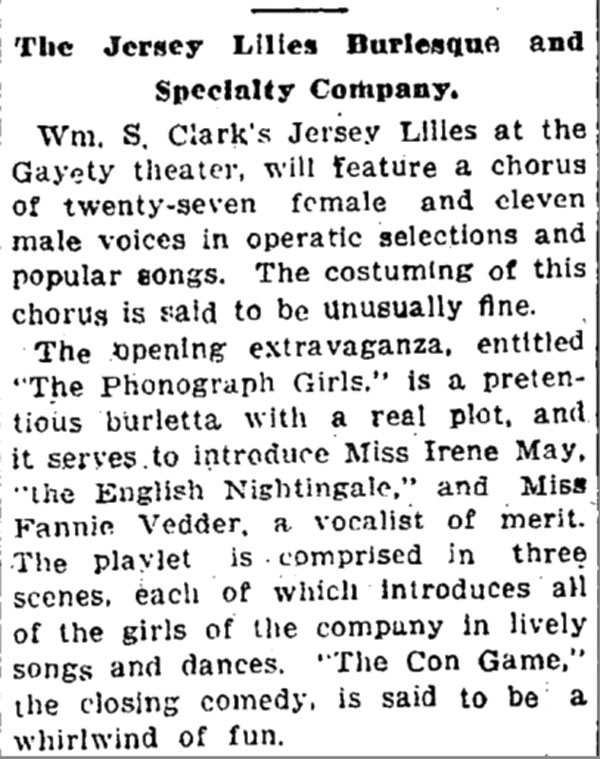
Detroit Free Press
(Detroit, Michigan), October 14, 1906
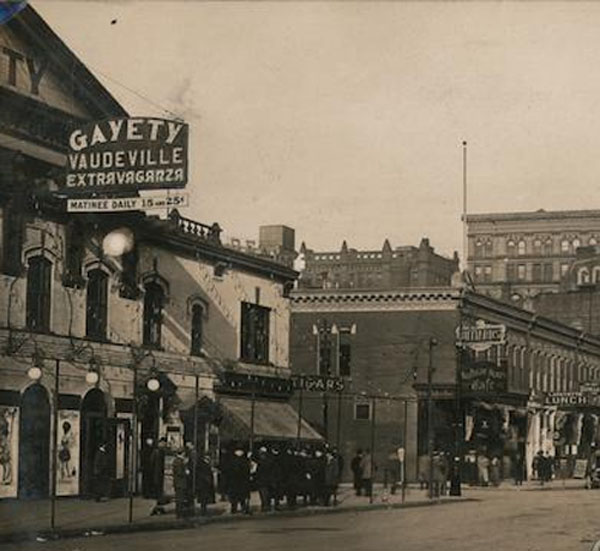
Gayety Vaudeville Extravaganza,
circa 1910
"The opening extravaganza,
entitled "The Phonograph Girls," is a pretentious burletta
with a real plot, and it serves to introduce Miss Irene May, "the
English Nightingale"...
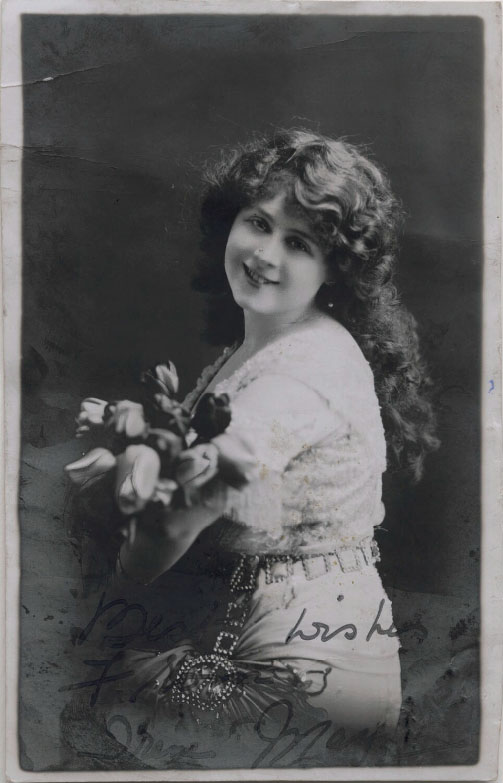
Miss Irene May, "the English Nightingale"
© National
Portrait Gallery, London - Actress
- portrait by Charles & Russell, bromide postcard print, 1900-1917

The Buffalo Commercial
(Buffalo, New York), November 10, 1906
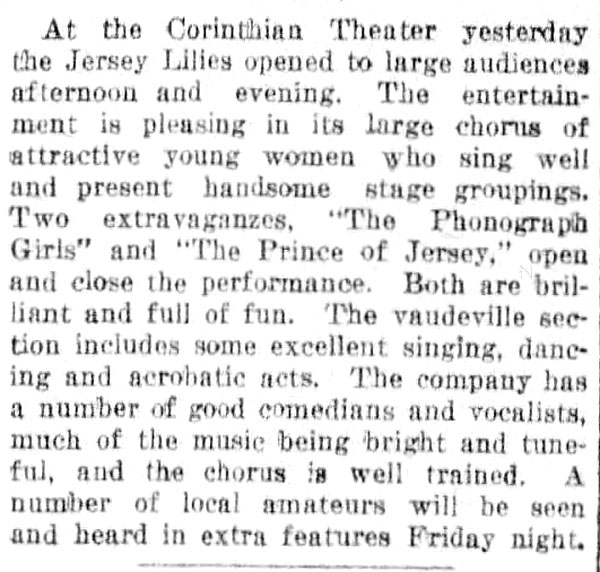
Democrat and Chronicle
(Rochester, New York), November 20, 1906
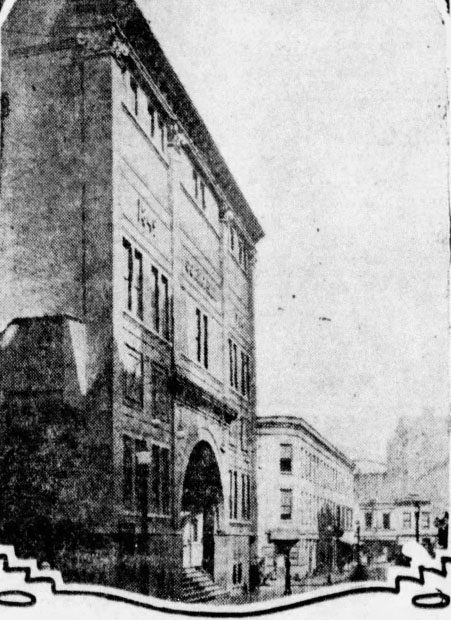
Corinthian Theatre, Rochester,
NY c.1910
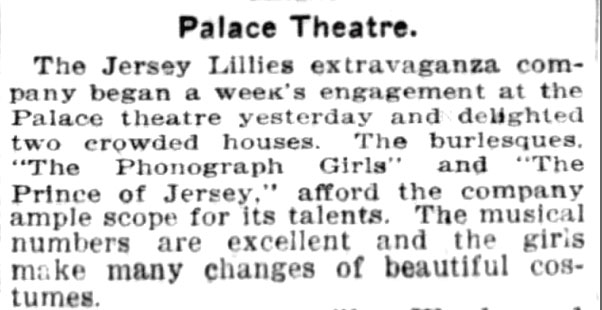
The Boston Globe,
December 4, 1906
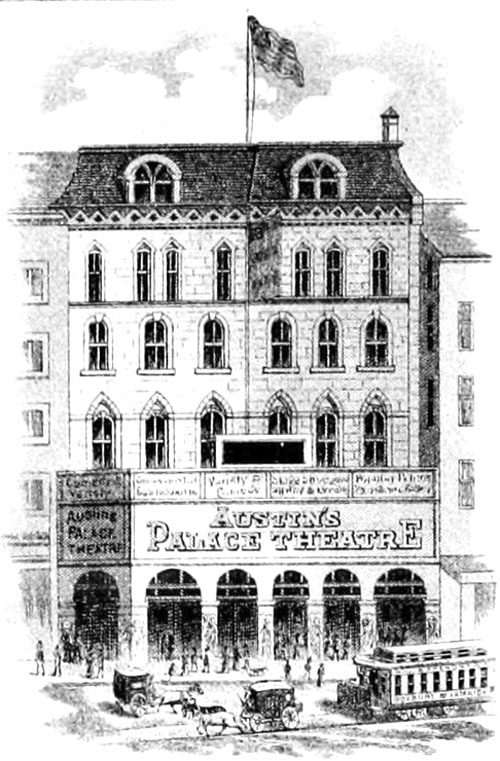
Palace Theatre Boston,
1890's - Wikipedia
The New Twentieth
Century Columbia Graphophone
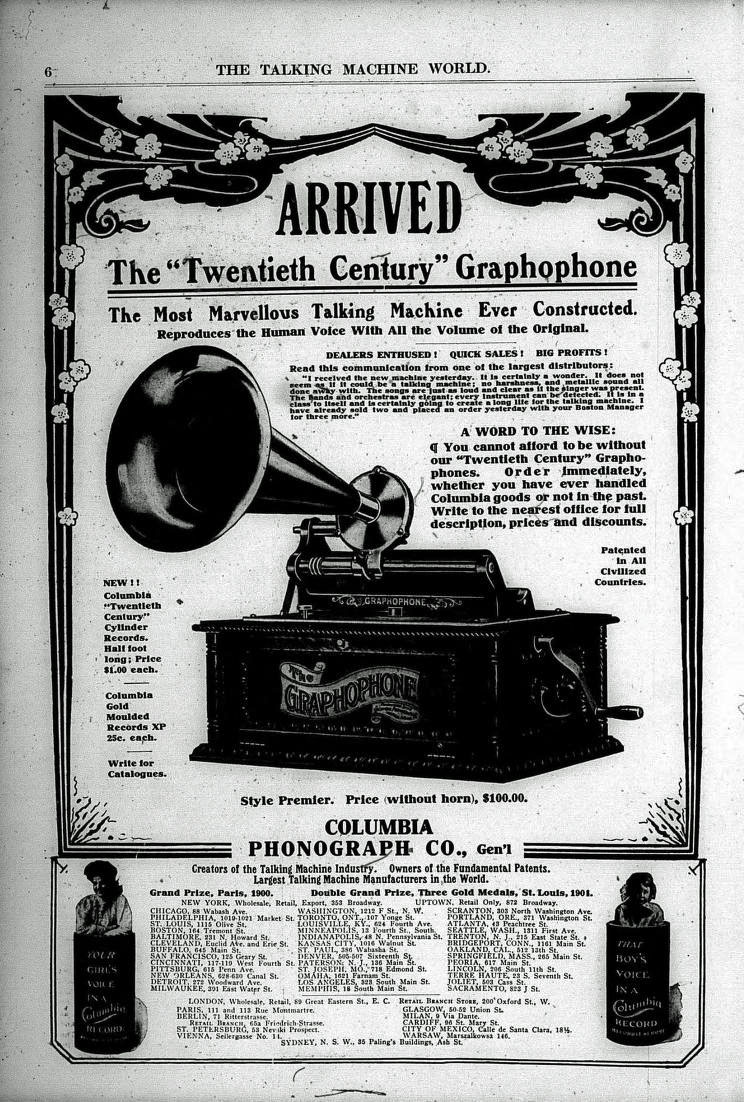
"ARRIVED The
Twentieth Century Graphophone"- The Talking Machine World,
July
1905
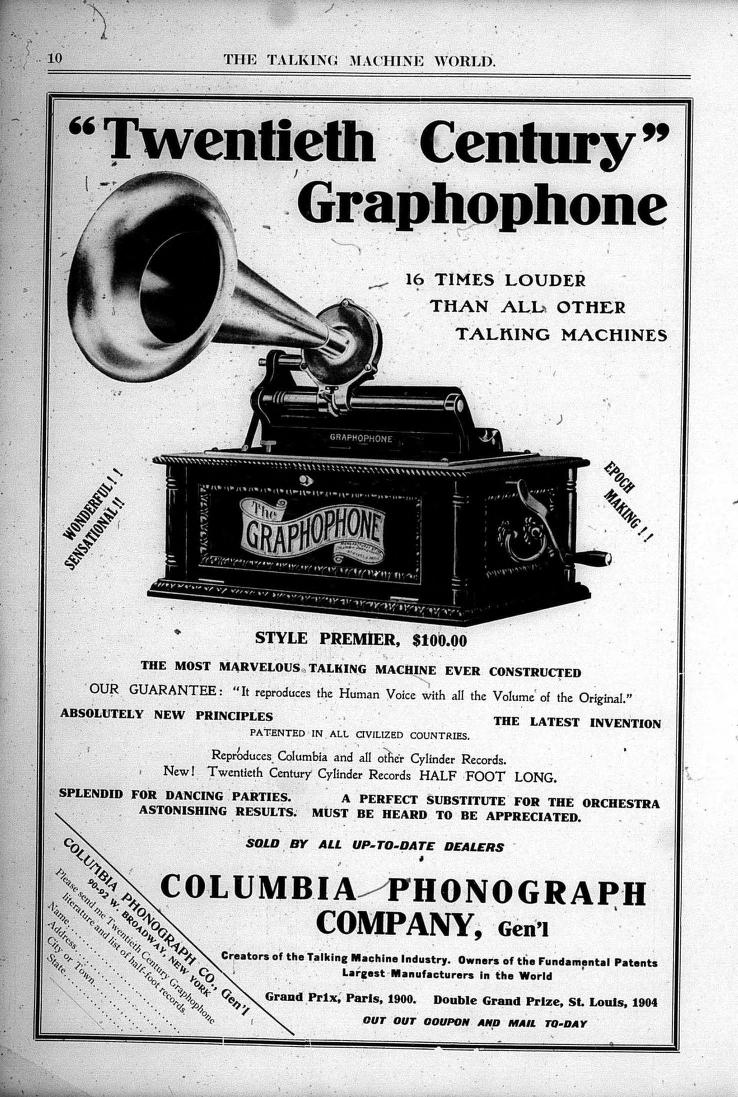
"16 Times Louder
Than All Other Talking Machines," The Twentieth Century Graphophone"
The Talking Machine
World, September, October and November 1905
The New Columbia Twentieth Century
Graphophone was publicized as being so loud it was heard outside phonograph
stores causing street obstructions.
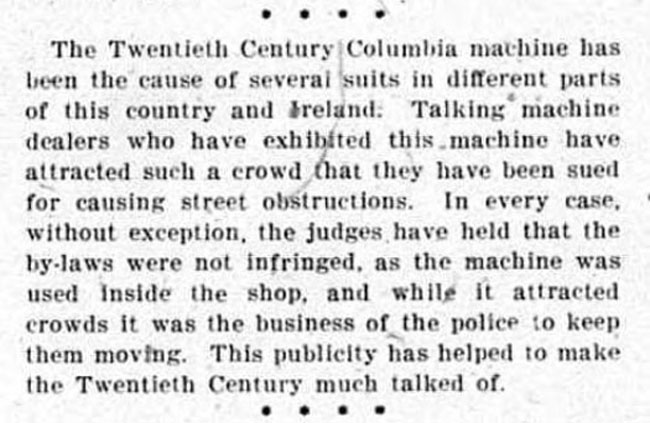
"The Twentieth Century Columbia
Graphophone has been the cause of several suits for attracting crowds
that caused street obstructions. In every case the suits have been
dismissed." The Talking Machine World, November
1905
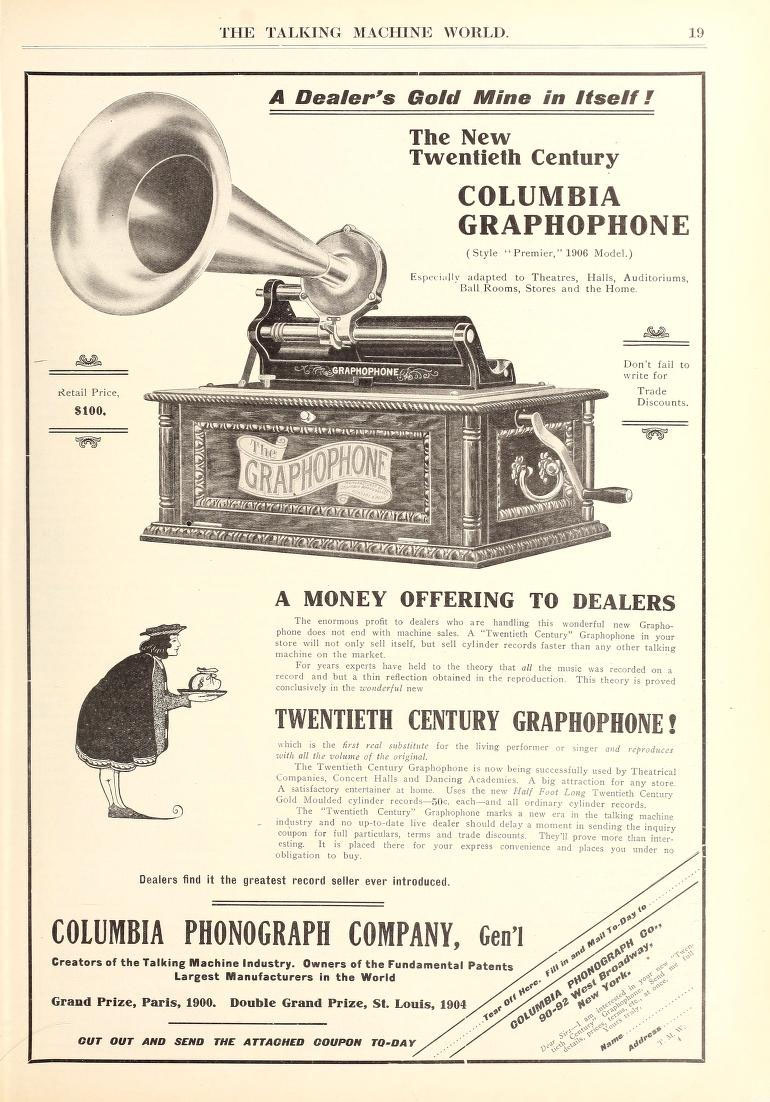
Introducing Columbia's Twentieth Century
Graphophone "especially adapted to Theatres, Halls, Auditoriums,
Ball rooms, Stores and the Home." The Talking Machine World,
January 15, 1906
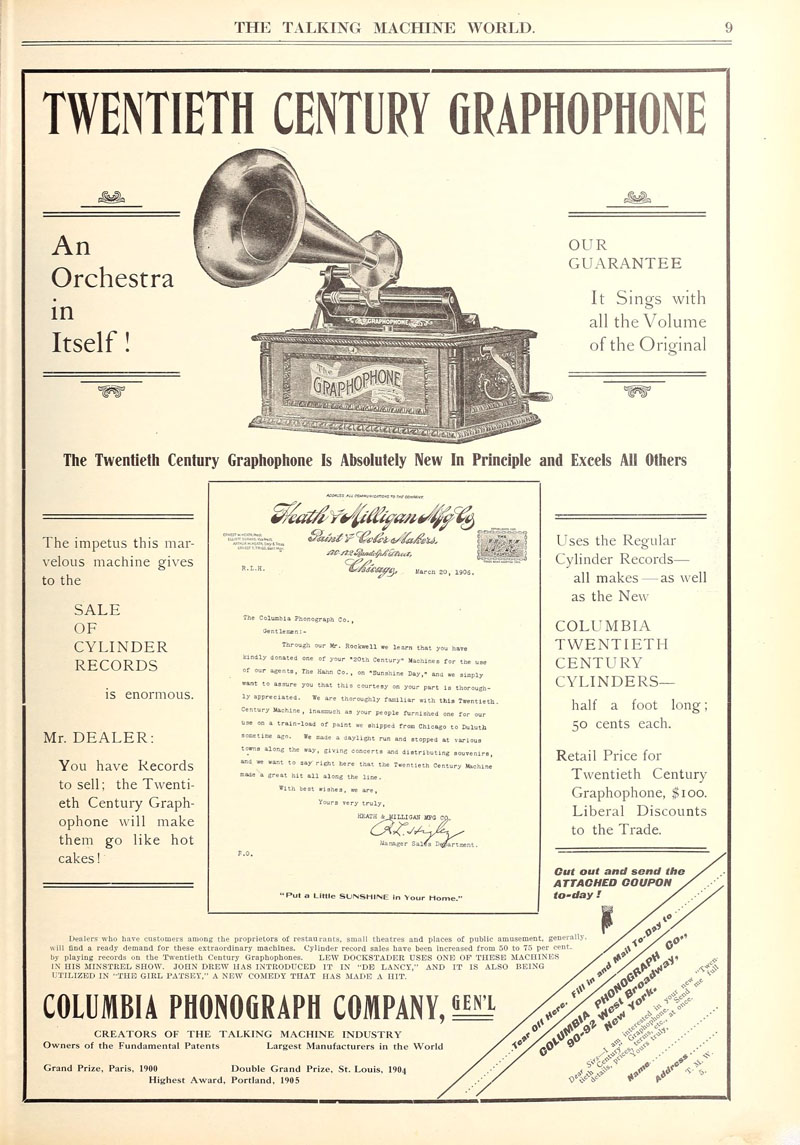
An extraordinary machine for 'restaurants,
small theatres and places of public amusement." The
Talking Machine World, April 15, 1906
"LEW DOCKSTADER USES ONE OF
THESE MACHINES IN HIS MINSTREL SHOW. JOHN DREW HAS INTRODUCED IT IN
THE "DE LANCY," AND IT IS ALSO BEING UTILIZED IN "THE
GIRL PATSEY," A NEW COMEDY THAT HAS MADE A HIT." The
Talking Machine World, April 15, 1906
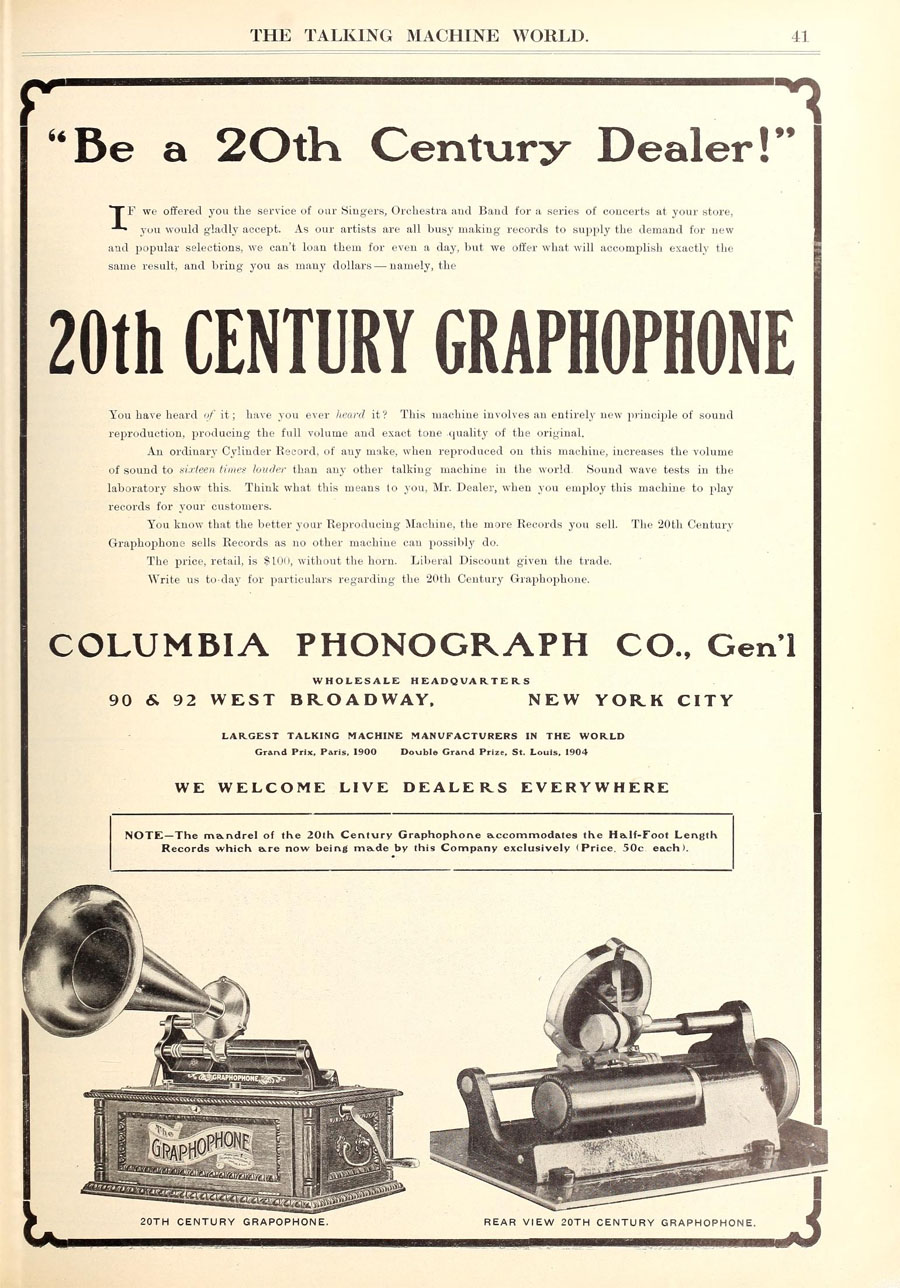
"This machine involves an entirely
new principle of sound reproduction, producing the full volume and
exact tone quality of the original." The Talking Machine World,
April 15, 1906.
For a close-up and description of the
Higham reproducer used by the Twentieth Century Graphophone see the
British
Library Sounds - Columbia Model BC graphophone: the amber wheel.
FACTOLA: "The Higham
Reproducer, invented by Daniel Higham, was used in Higham's
talking machine named the High-am-o-phone and was displayed
at the St. Louis World's Fair in 1904 as part of the exhibit of Columbia
Phonograph Company records and machines. Higham's machine was noted
on the exhibit's inventory sheet (#28) as "the loudest sound-reproducing
machine in the world." (Courtesy Antique
Phonograph Monthly 11:1, Allen Koenigsberg and Doug DeFeis).

The Talking Machine
World, August 15, 1906
The Columbia Twentieth Century Graphophone
"is also used outside to attract the crowd to the theater, and
has proven an effective advertising medium." The Talking Machine
World, October 15, 1906 p. 40.
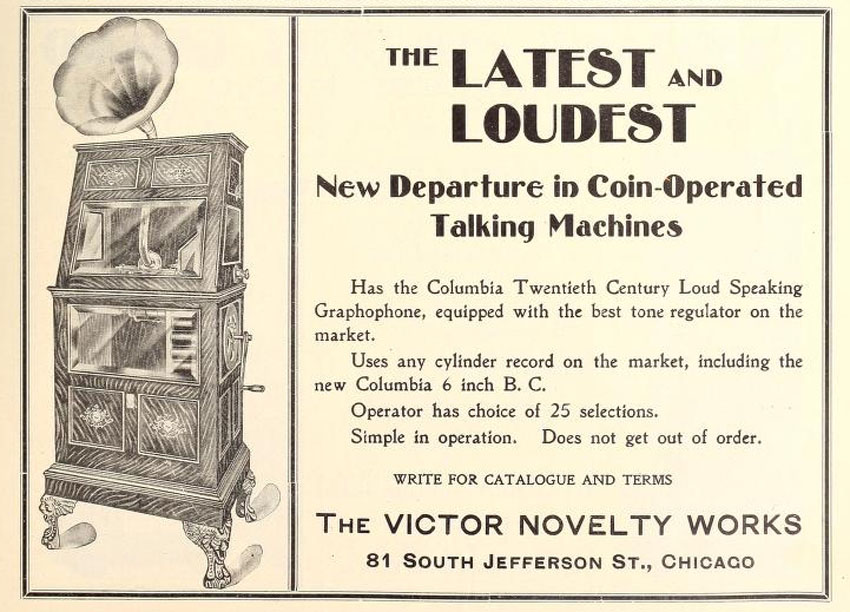
Ad for coin-operated talking machine
using the Columbia Twentieth Century Graphophone, The Talking Machine
World, September
15, 1906
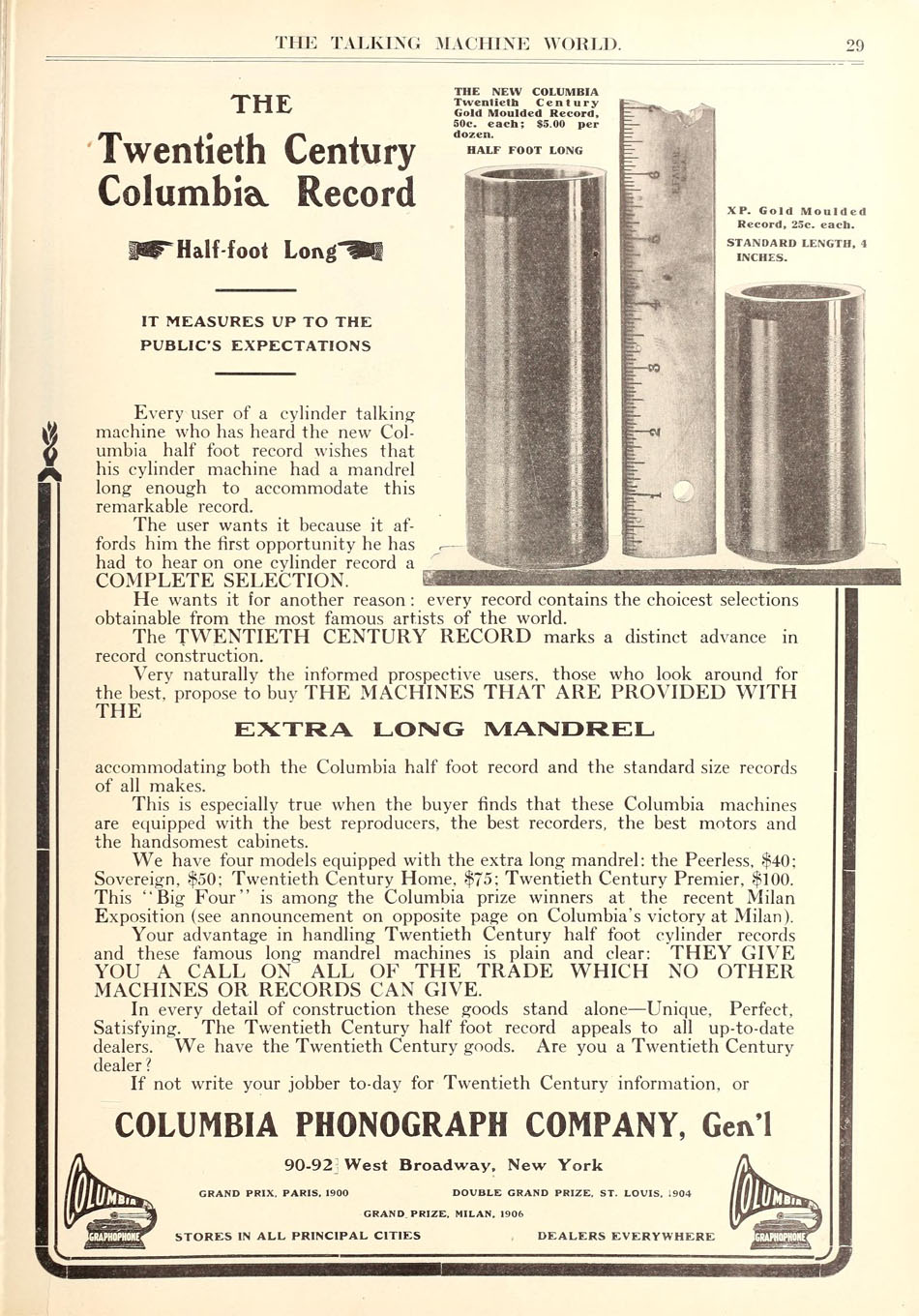
The Half-foot Long Record for the Twentieth
Century Graphophone, The Talking Machine World, November
15, 1906
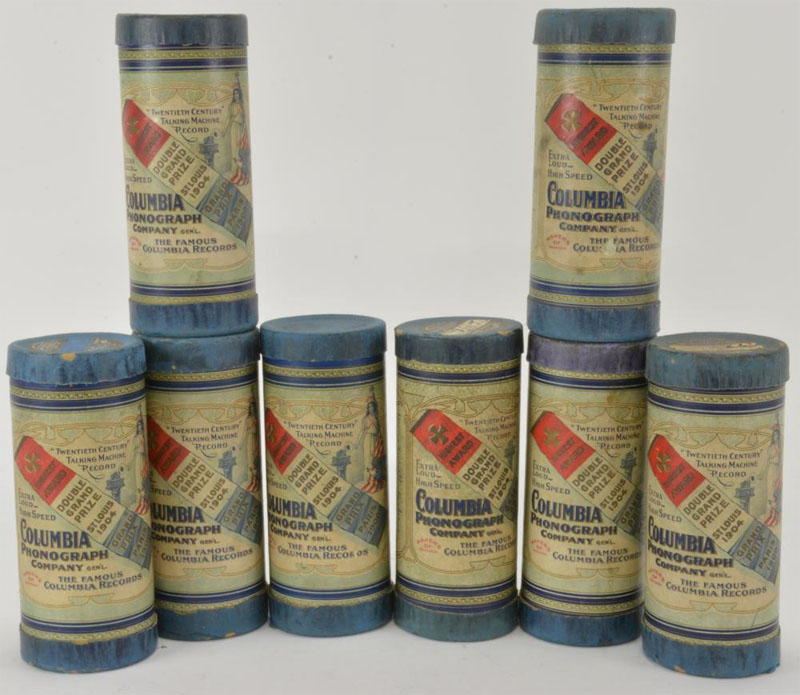
Columbia Phonograph Twentieth
Century 6" Records
A few examples of
1906 phonograph store interiors
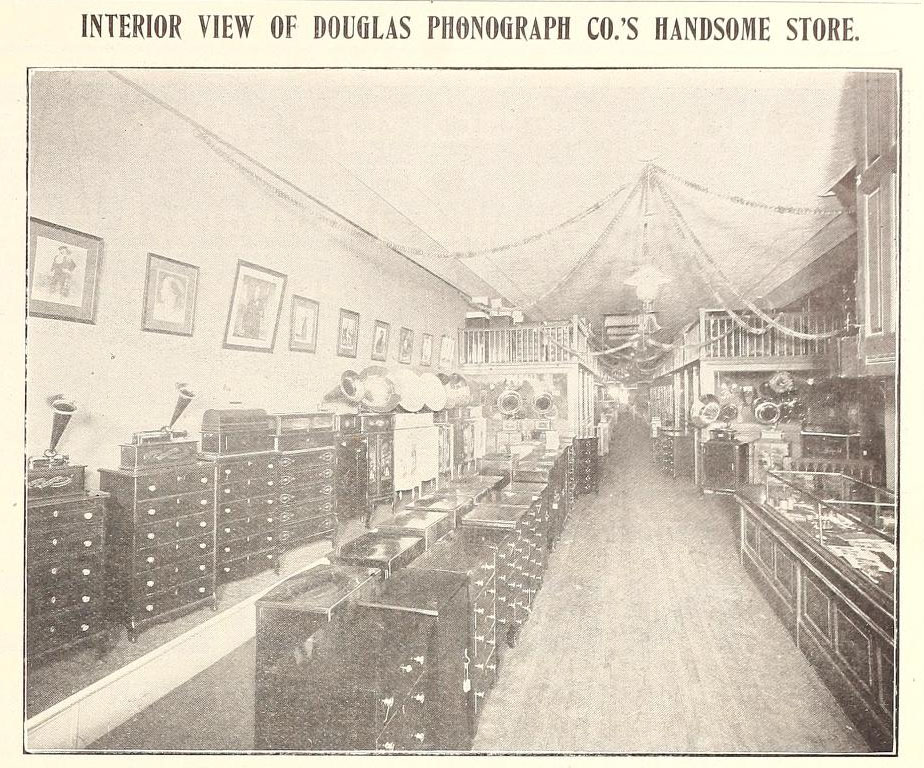
Douglas Phonograph Company's Store,
89 Chambers Street. New York, The Talking Machine World, February
1906,
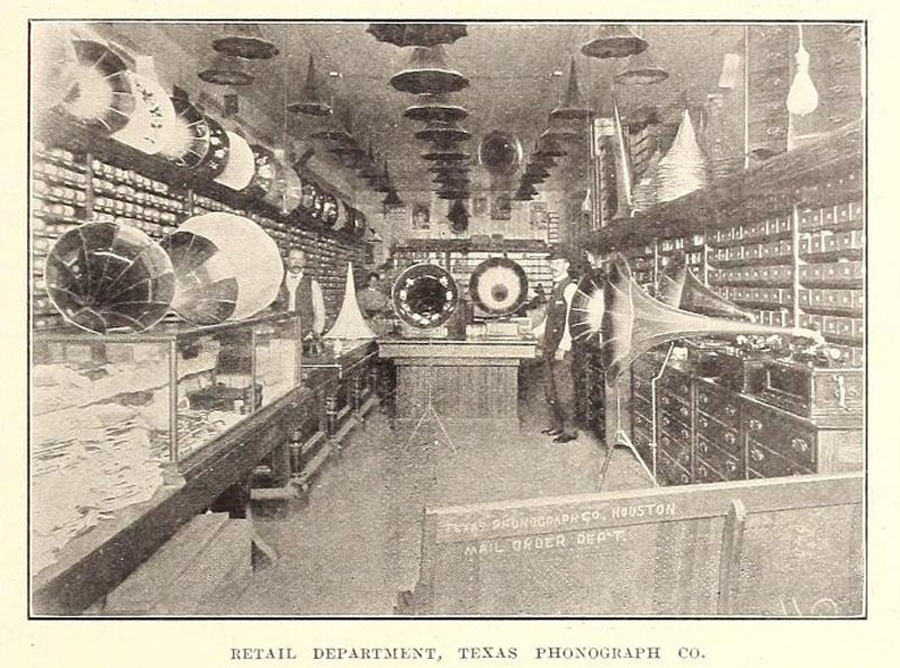
Texas Phonograph Company,
Houston, TX, The Talking Machine World, April 1906
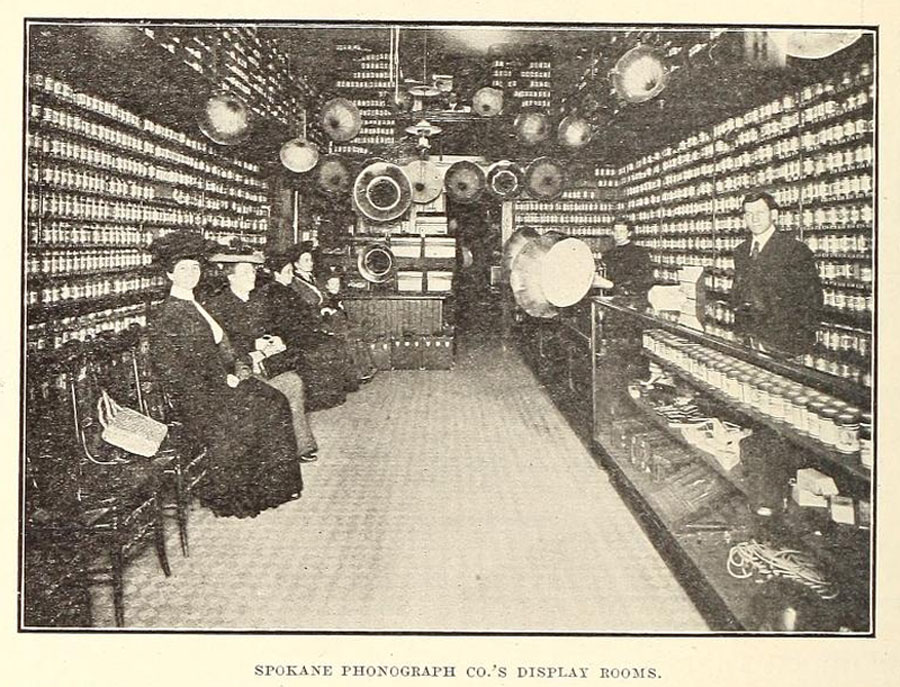
Spokane Phonograph Company
Show Room, The Talking Machine World, June 1906
FACTOLA: "THE PHONOGRAPH
GIRLS is the first play known in which the talking machine and
its commercial environment has figured in a professional way and carrying
off the honors." (The "talking machine" used was
Columbia's Twentieth Century Graphophone. The commercial environment
was a scene inside the interior of a phonograph store). The Talking
Machine World, October
15, 1906
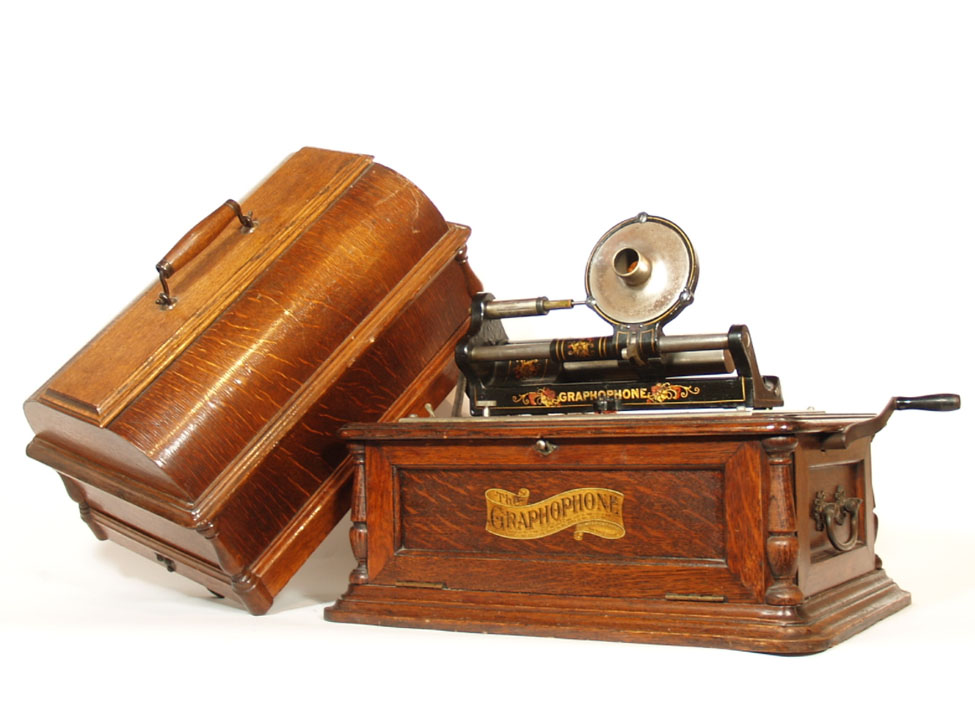
The Columbia Twentieth
Century (BC) with Higham Reproducer (Courtesy TechnoGallerie)
Additional
uses of the "BC" Graphophone in the Performing Arts (Moving
Pictures)
Unfortunately, no script
or musical score or cylinder record has been located for The Phonograph
Girls.
More about that sketch can still
be found, but there are also other examples of performing arts productions
having connections with the BC Graphophone and other talking machines.
FACTOLA: The
"BC" Columbia Graphophone was used by the Cameraphone
Company in 1908 to combine recorded sound with moving pictures. A
performer "speaks, and the words come from the Graphophone in
perfect accordance with the movements of his lips....He sings his
song with every appropriate gesture, the word words and music all
the while coming from the Graphophone." One of the most successful
of the combined songs and moving pictures is the famous "Smile,
Smile, Smile" from Lew Field's latest production..." (Source:
May 1908 The Columbia Record trade journal and courtesy of
The (Lights!
Cameraphone! Action!
by Doug DeFeis, Issue 89 Vol XI - No1., 1993, The Antique Phonograph
Monthly and Allen Koenigsberg).
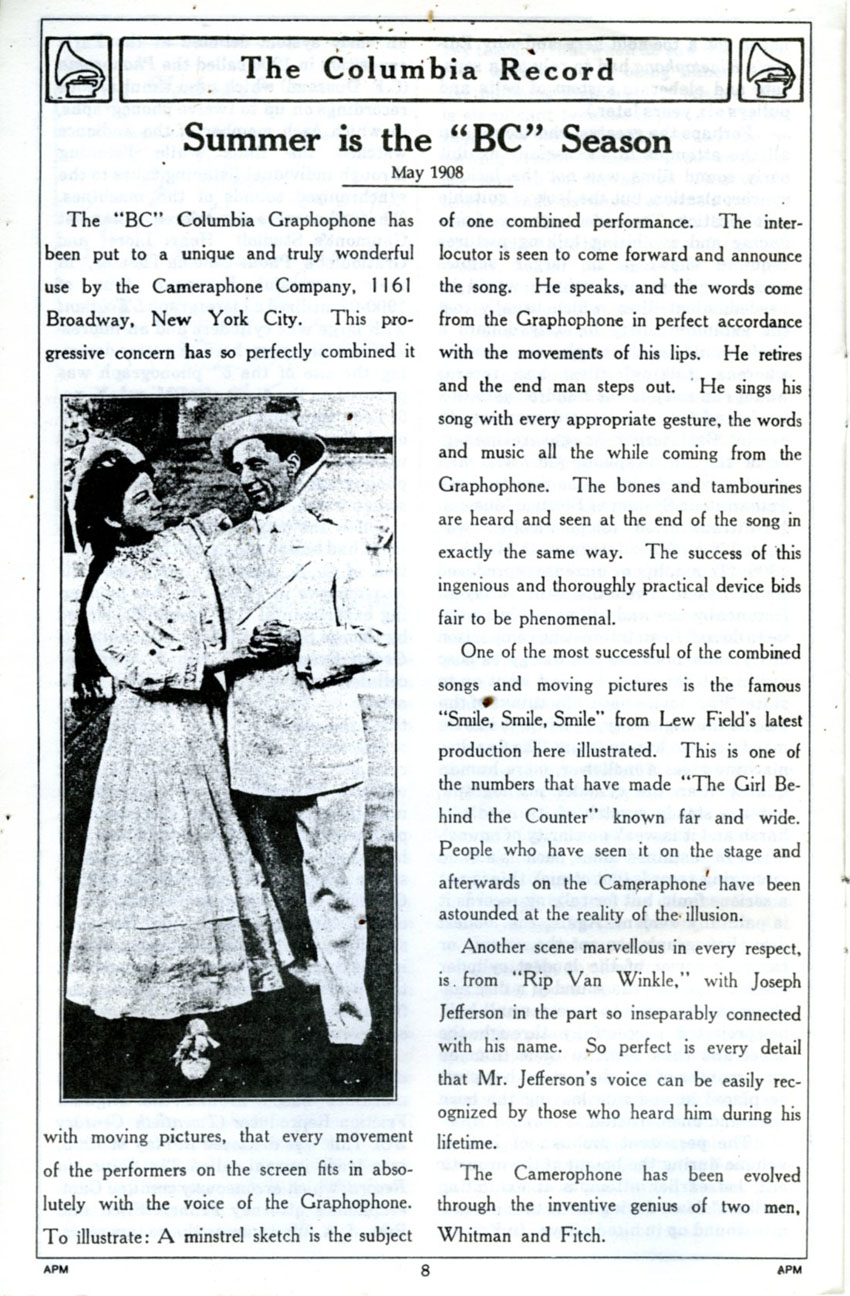
The Columbia Record
trade journal, May 1908 (Courtesy of The Antique Phonograph Monthly,
Ibid.)
"The Cameraphone Co.,
apparently chose from the very beginning to use machines based around
the Higham Friction Reproducer (Twentieth Century BC)."
The Antique Phonograph Monthly, Ibid.
A competitor to the Cameraphone
was the Chronophone "patented by Léon Gaumont in 1902 to synchronise
the Cinématographe (Chrono-Bioscope) with a disc Phonograph (Cyclophone)
using a "Conductor" or "Switchboard". This sound-on-disc display was
used as an experiment from 1902 to 1910....The Chronophone would show
Phonoscènes (an early forerunner of music videos) and films parlants
("Talking Films") almost every week from 1911 until 1917 at the Gaumont
Palace, "the Greatest Cinema Theatre in the World", previously known
as the Paris Hippodrome." Wikipedia
FACTOLA: "The
Judge," an English play in 1890 used a phonograph "to
provide the sound effects of a crying infant from off stage."
This is believed to be the first use of a phonograph in a supporting
role of a stage play. (Source: "Edison in Hollywood" by
Allen Koenigsberg, The Antique Phonograph, June 2016).
The Phonograph in the
Movies
There are countless scenes
in movies that include a phonograph.
Sometimes a phonograph
is just for set design, providing an association with a particular
time period. Playing a record can also create a mood while reinforcing
the time period of a scene.
But in the most interesting
movies (at least in the opinion of Friends of the Phonograph)
it can be the star of the show. One example of an Edison phonograph
and a record playing that role is the 2015 Disney movie Tomorrowland.
To learn more visit The Phonograph in the Movies - The
Eiffel Tower, an Edison Record and Tomorrowland.
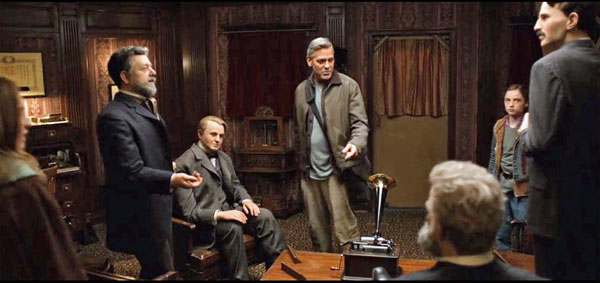

Phonographia
|

































